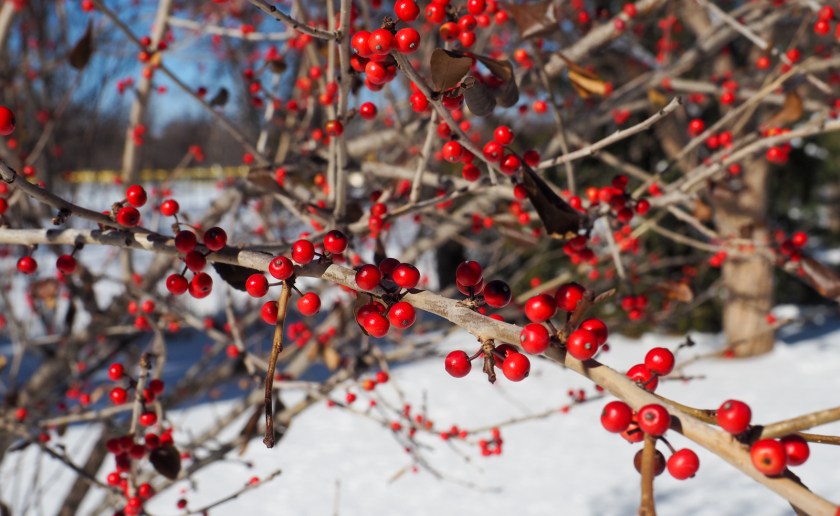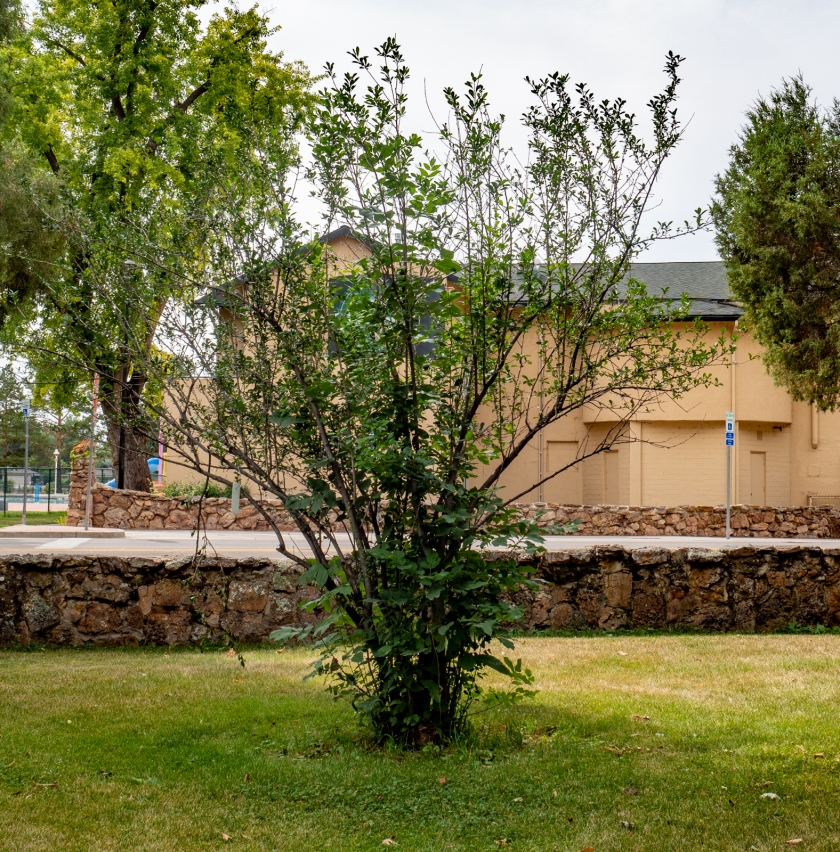
The possumhaw is in the genus Ilex, which consists of over 400 species of holly, some of which are evergreen and many of which are associated with Christmas. Alas, this neglected and oddly name shrub or small tree is not one of those with a legendary past. One source suggests its name comes from opossums feasting on its berries.
Most of the year, except for its shiny leaves, it is barely noticeable. It is, though, native to North America, growing mostly in southern states. The national champion tree is found in North Carolina and is but forty-two feet in height with a trunk of three feet in circumference.
One thing this humble plant does seem to have is a plethora of names and spellings—Possumhaw, Possum-haw, Possumhaw holly, swamp holly, meadow holly, prairie holly, winterberry, bearberry, welk holly, deciduous yaupon, deciduous holly—the last two names because, unlike the more famous hollies of holiday fame, this tree is not evergreen. No mention is made of uses for this shrub’s wood. Apparently it has no known medicinal value nor is it edible to humans.
Why then would you want to grow this? Birds and small mammals eat the berries in the winter. It may be a host to a species of butterfly as well as bees and other nectar insects. And the berries are delightful in winter, providing color to a bleak landscape.

If you are looking for E61 Possumhaw (Ilex decidua Grace) on the City Park Tree Tour in winter, it should be easy to spot in the enclosure across from the pool, near the miniature train station. Of course it is located in the same spot the rest of the year, but you may need to look more closely to find it!

